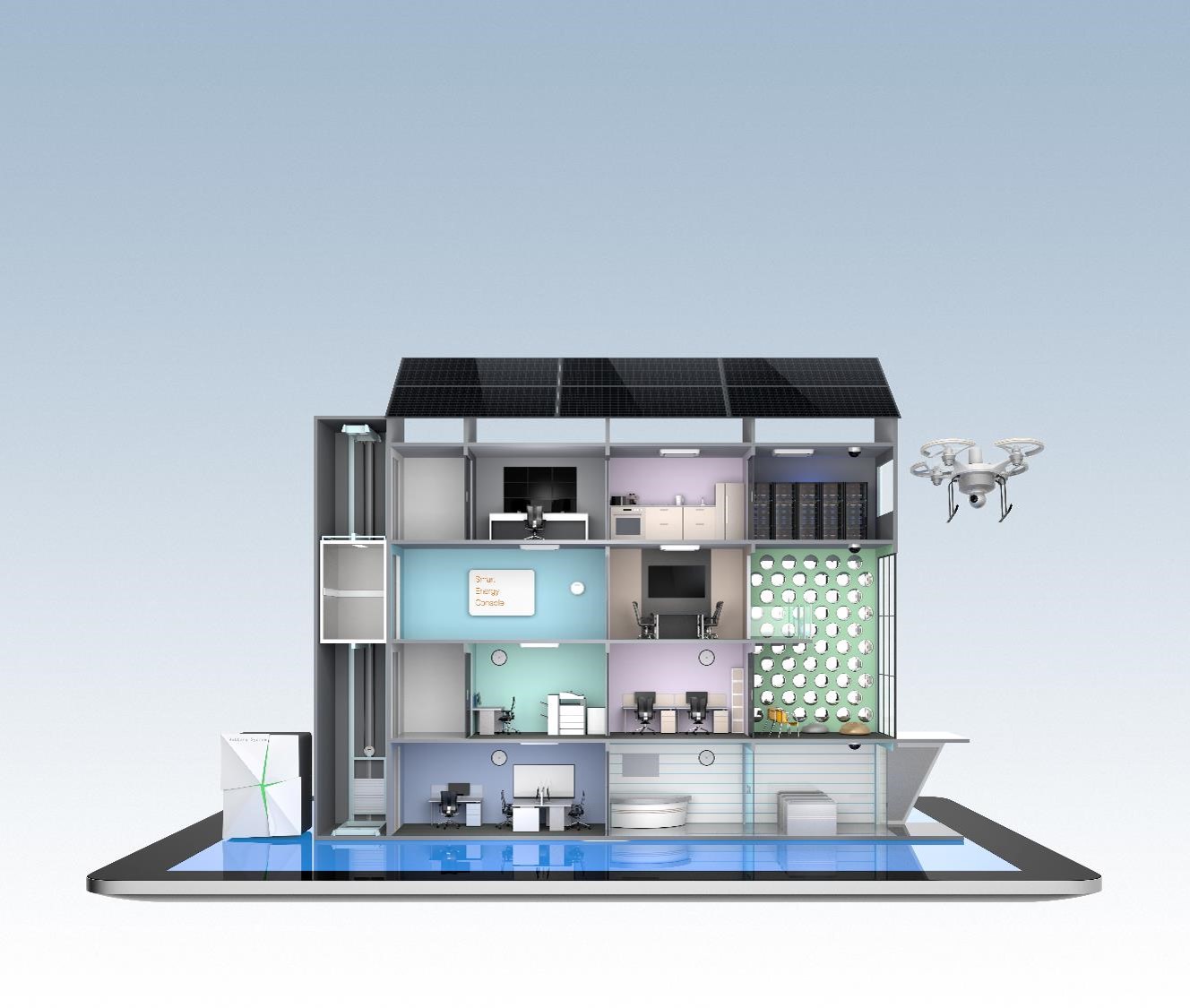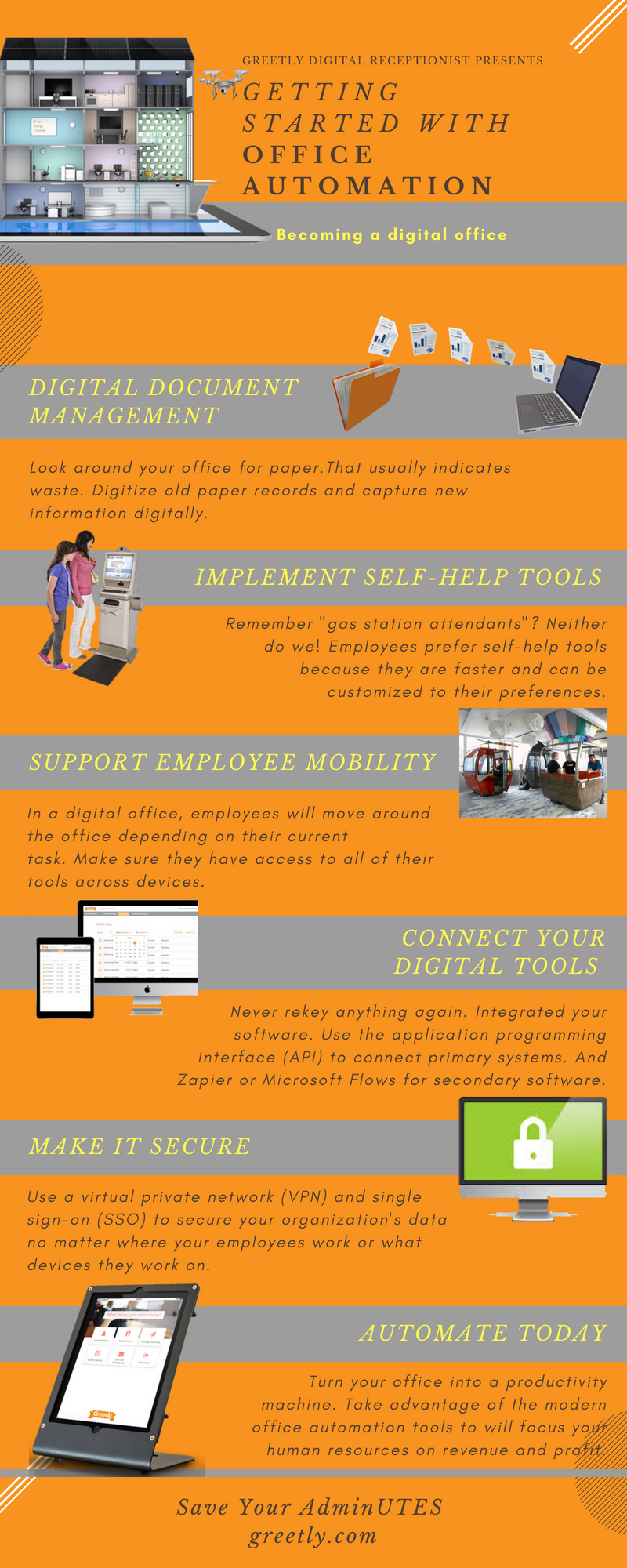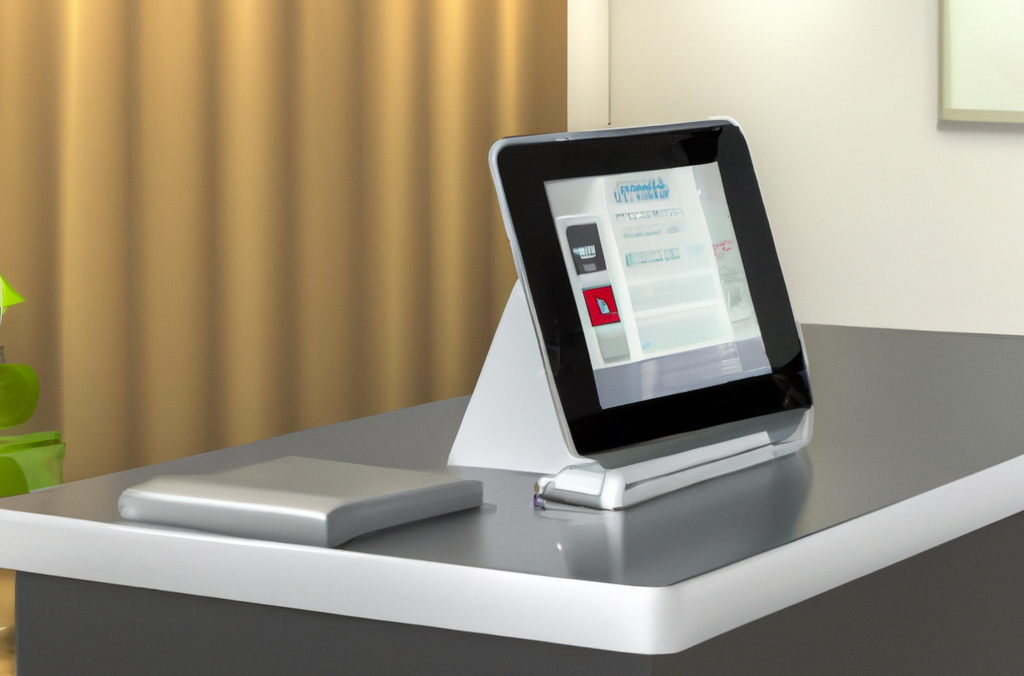Getting Started With Office Automation [Infographic] | Greetly

“Change before you have to.” – Jack Welch, Retired General Electric CEO
Business success is literally happening faster today than ever. So is business failure.
Today’s digital office is not like the manual workplace of the past. Leveraging office automation, in order to thrive, your workspace must be a fast-paced, flexible machine built on employee productivity and work output.
What is office automation? How can it help you? And where should you get started? Let’s take a look.
The Manual Office of Yesterday
It may seem nostalgic, but not long ago, everyone was doing business in an analog way. Even though there was digital technology throughout the office, the primary workflows still resembled the paper document model. Many processes had a physical component, or multiple iterations between people working through administrative tasks, which slowed down productivity and was expensive and time-consuming.
With the physical processes in place, employees were tied to that location. This created bottlenecks in operation, and it didn’t scale very well.
Technologies Enabling Office Automation
The proliferation of smartphones
You have one. In fact, you are probably staring at it right now! A Pew research report indicates that 77% of American adults have a smartphone. And that rises to over 91% for college graduates. And smartphone adoption continues to climb steadily around the world. Companies initially fought smartphone usage in the workplace because they didn’t know how to keep the digital environment secure. More recently, enterprises are embracing smartphones due to the massive amount of computing power it puts in their employees’ hands. Often at no cost to the employer.
The digitization of everything
Tools like optical character recognition allow organizations to scan everything – old invoices, statements, customer files, whatever – and be able to search and read the key information instantly. Combine that with shared cloud storage and that roomful of filing cabinets is officially obsolete. These technologies have automatic redundancy, can be accessed anywhere, and allow for real-time collaboration. All for a cost of just about zero!
The one concern with these tools is privacy, given the endless news about hacks, and who owns the data. Anticipate a showdown between cloud providers and large companies to arise.
The ease of remote access
Sometimes a smart office doesn’t require an office at all. There are still lots of advantages to working together in the same office. But the modern office can also be dispersed with communications via instant messaging, conference calls, and face-to-face Webinars.
This trend has also made outsourcing easier than ever. Need a skill part-time or for a specific window? Hire a freelancer, whether they work around the corner or further afield. Thanks to the cloud and abundant computing, you can give them access to the information they need, and only the information they need. Computer share information seamlessly across networks and organizations.
Becoming a Smart Office
 You do not need to go from manual to fully digital overnight. In fact, you are probably aware of several tools that can help digitize your workplace and processes. Here are some easy places to start.
You do not need to go from manual to fully digital overnight. In fact, you are probably aware of several tools that can help digitize your workplace and processes. Here are some easy places to start.
Digital document management
Look around your office for paper. Paper presentations, paper client files, a paper visitor log, or even receipts. Figure out how to digitize old documents and have new information be created digitally. You improve record-keeping and the ability to audit usage. You reduce the cost of all the physical equipment, re-keying of data, and record-keeping.
Everyone prefers self-help tools
Remember waiting for a gas station attendant? Or on long lines to check into a flight. Technology saved Exxon and United Airlines money — and you are happier with the experience too!
- Your visitor management system
- Scheduling meetings
- Booking travel and expense reporting
- Computer backups
- Media clippings
- Reporting
Many of these tasks required an admin or outside service in the past. But they can be done faster, in a more personalized manner, with today’s tools.
Employee mobility
In a digital office, employees will move around the office depending on their current tasks. This can mean using a collaboration space when brainstorming or a quiet place for better focus when reading reports. And working hours may vary as they experience work-life integration. Make sure they have access to all of their tools across devices.
Connect your digital tools
Never rekey anything again, ever. All of your software should be integrated and sharing information between systems. Use the application programming interface (API) to connect primary systems. And Zapier or Microsoft Flows for secondary software.
Make it secure
A virtual private network, or VPN, allows workers to receive and share data securely when they travel for business, check email at the gym, or work from a coworking space half a world away. Consider single sign-on, SSO. This software reduces the chance that passwords will be hacked or forgotten when needed.
Summary
Effort wasted on administration is a thing of the past. In order to thrive today, you need to focus your people, your most valuable asset, on tasks that boost revenue and profit. Taking advantage of the modern office automation toolkit can make your workplace a hub of flexible services that enable employees to accomplish almost any need that the business requires.





